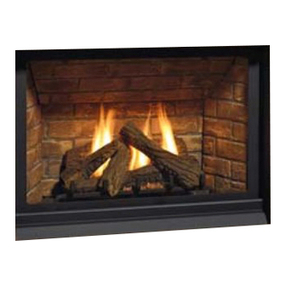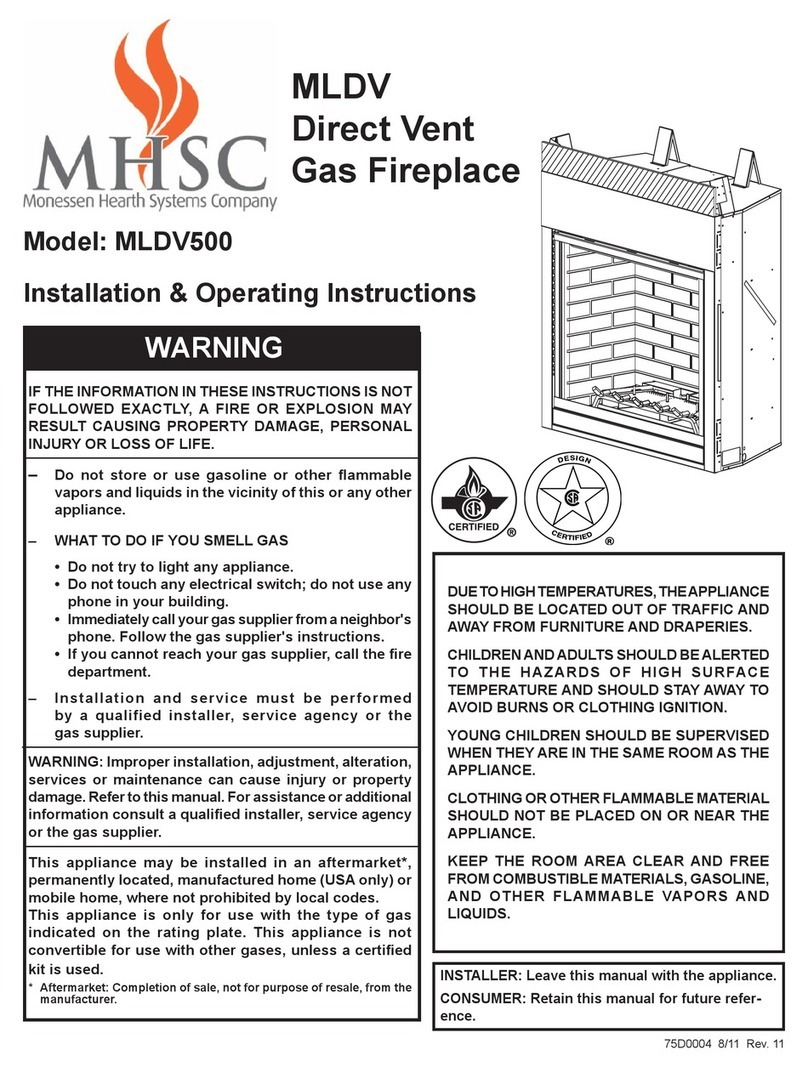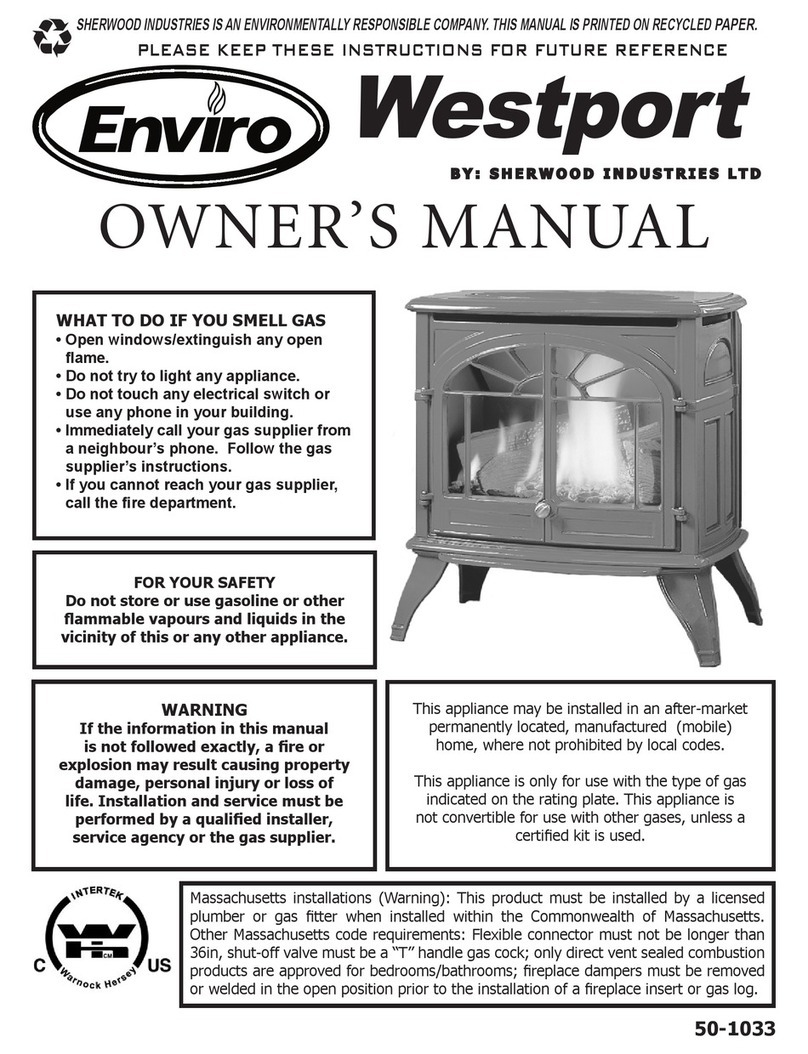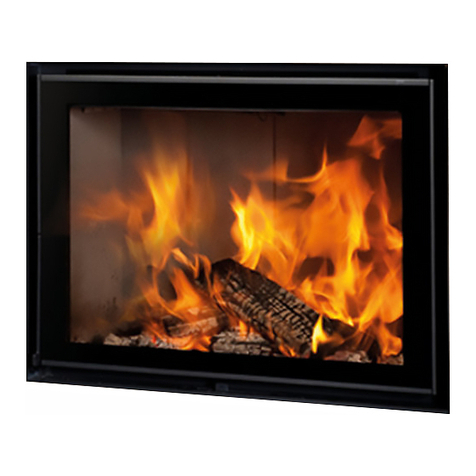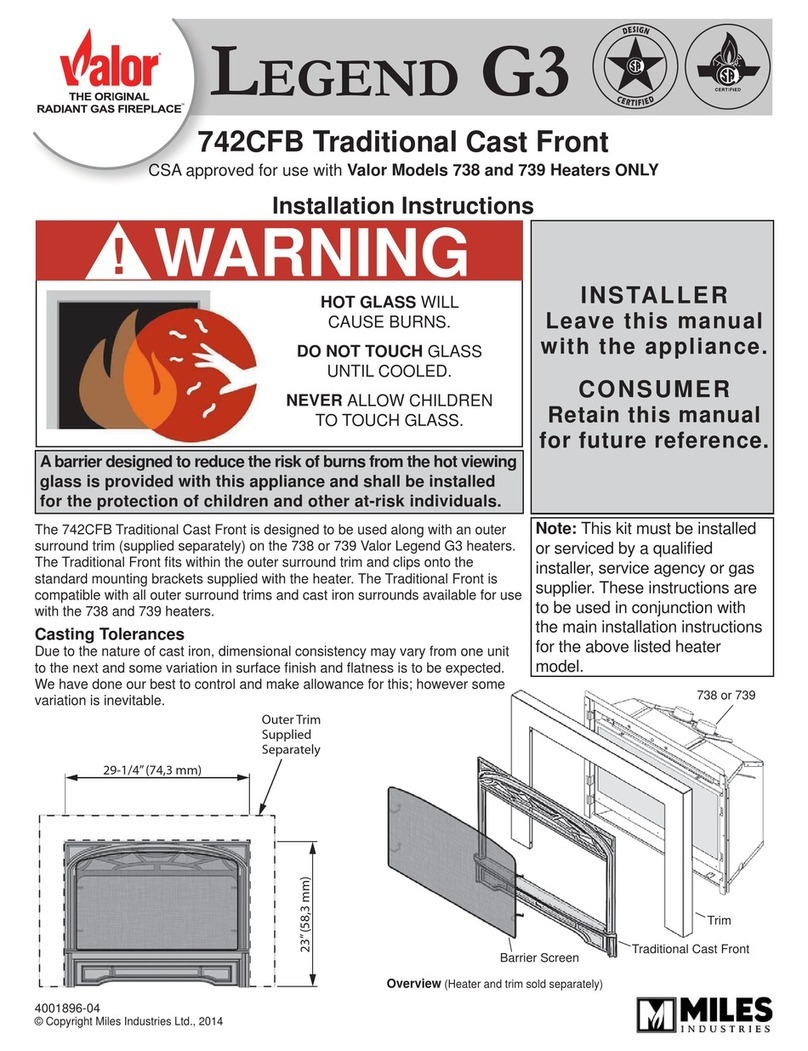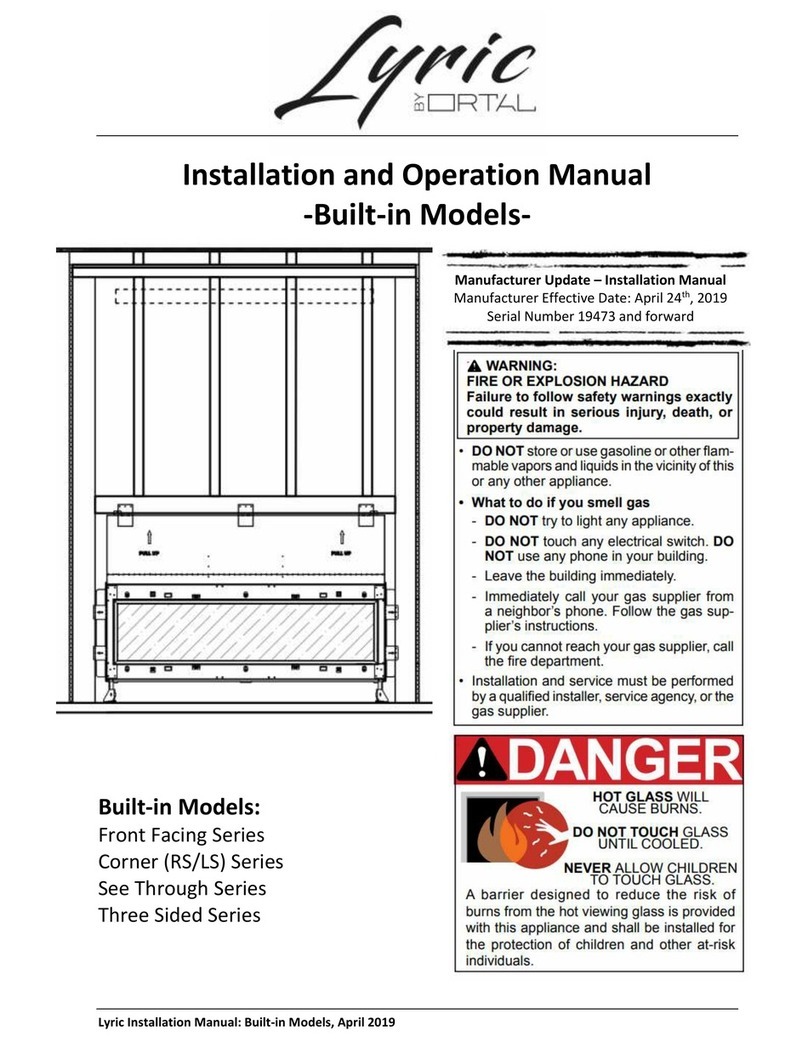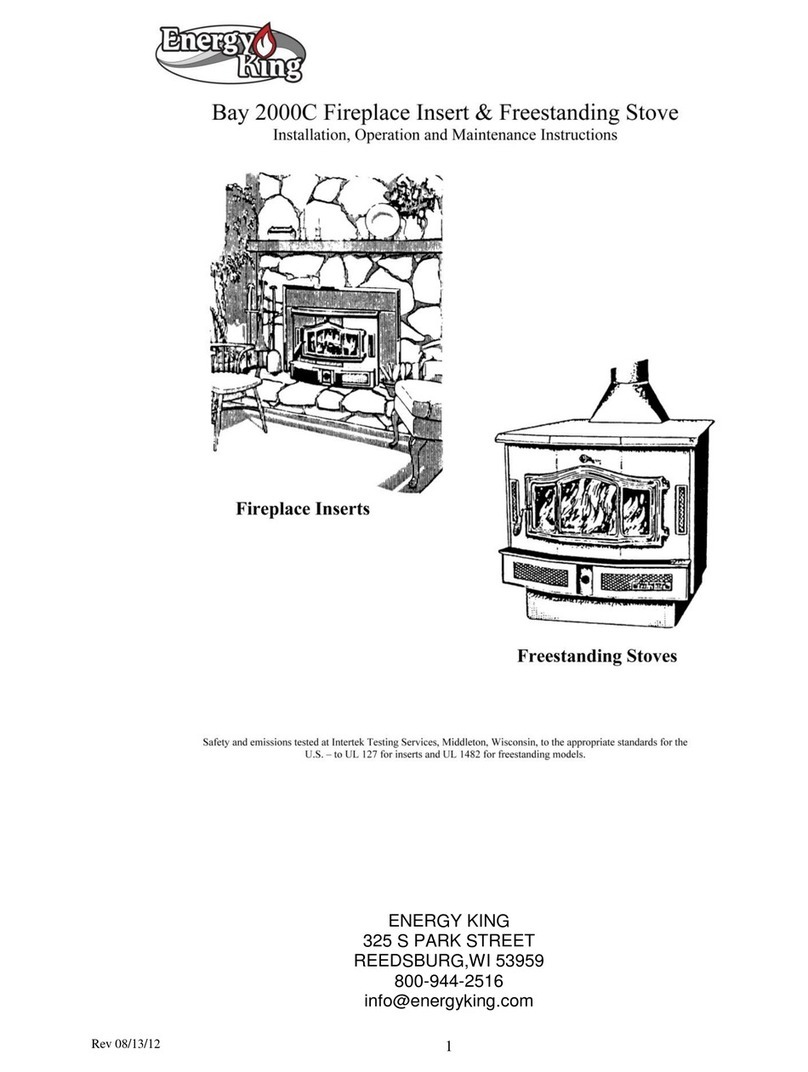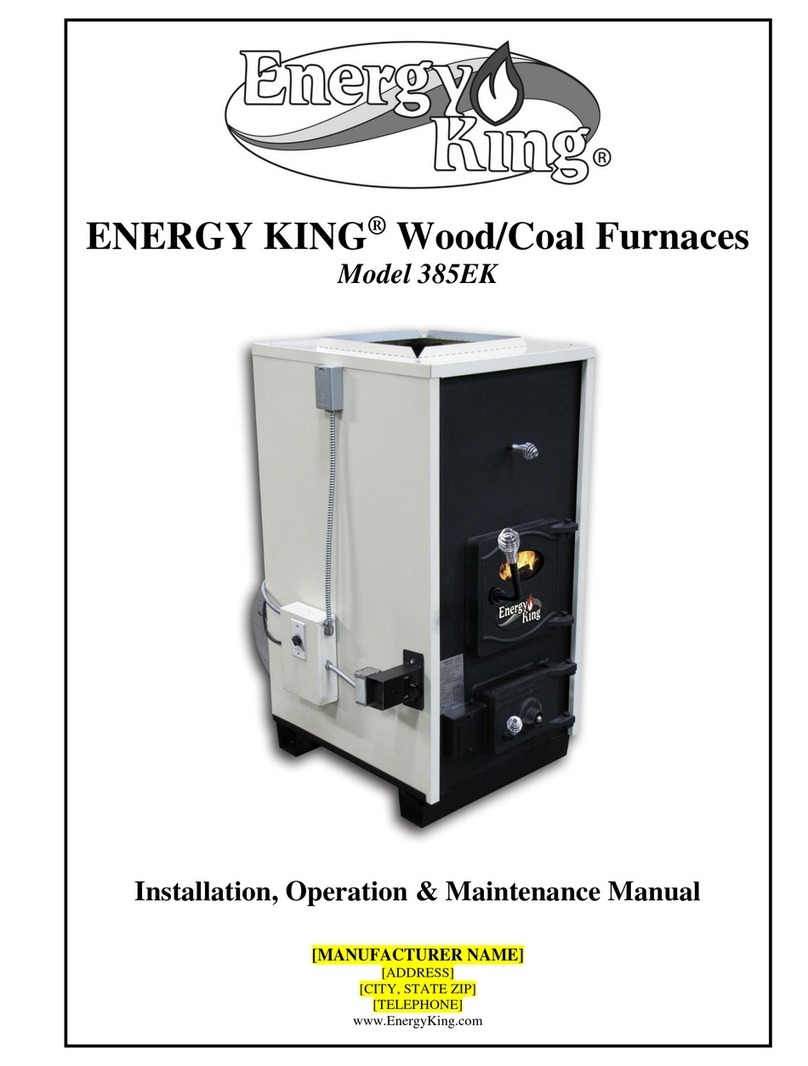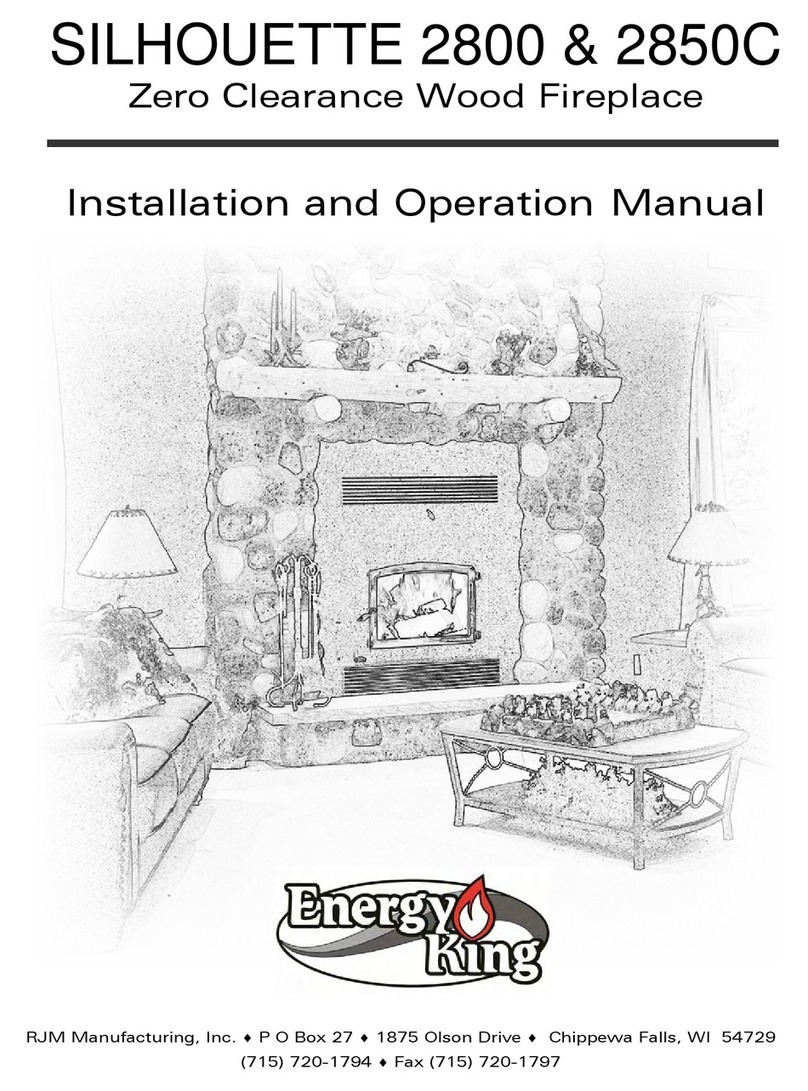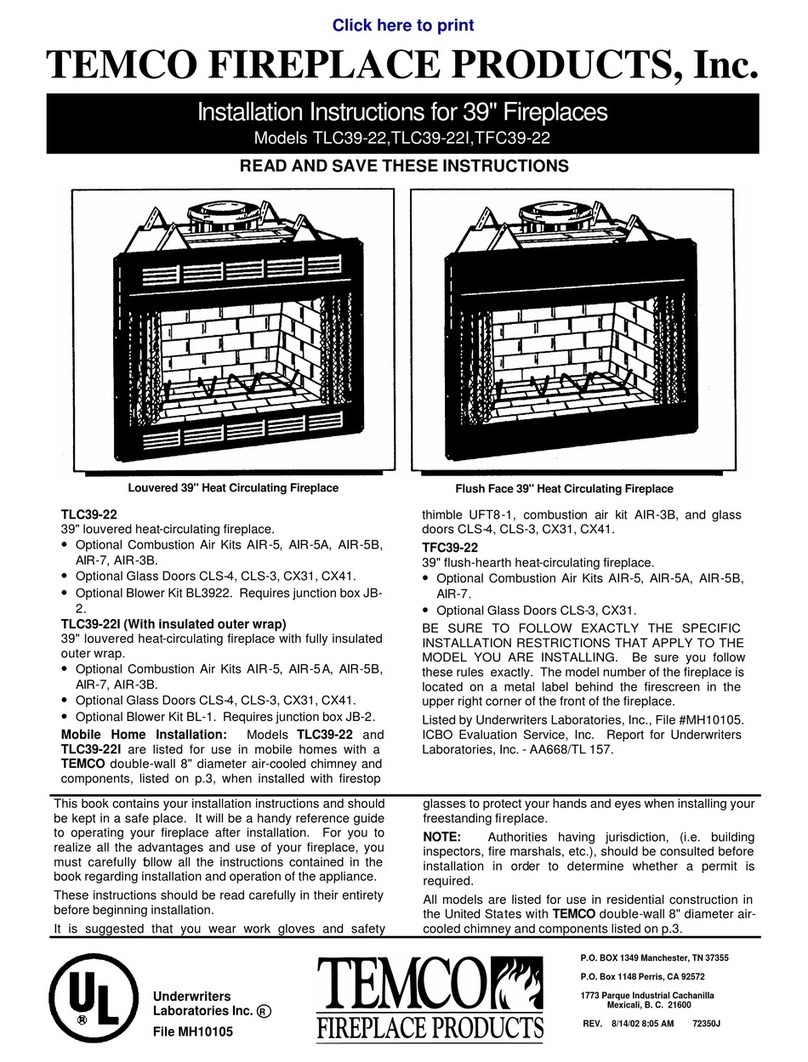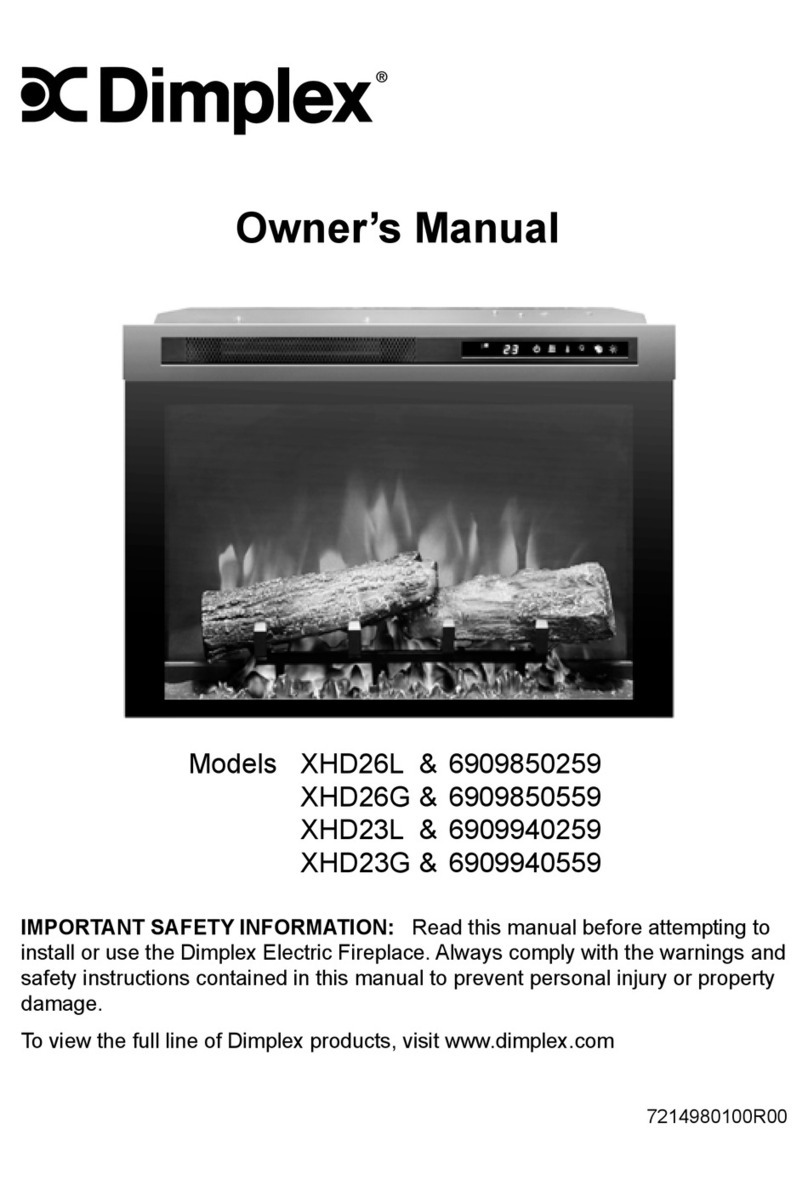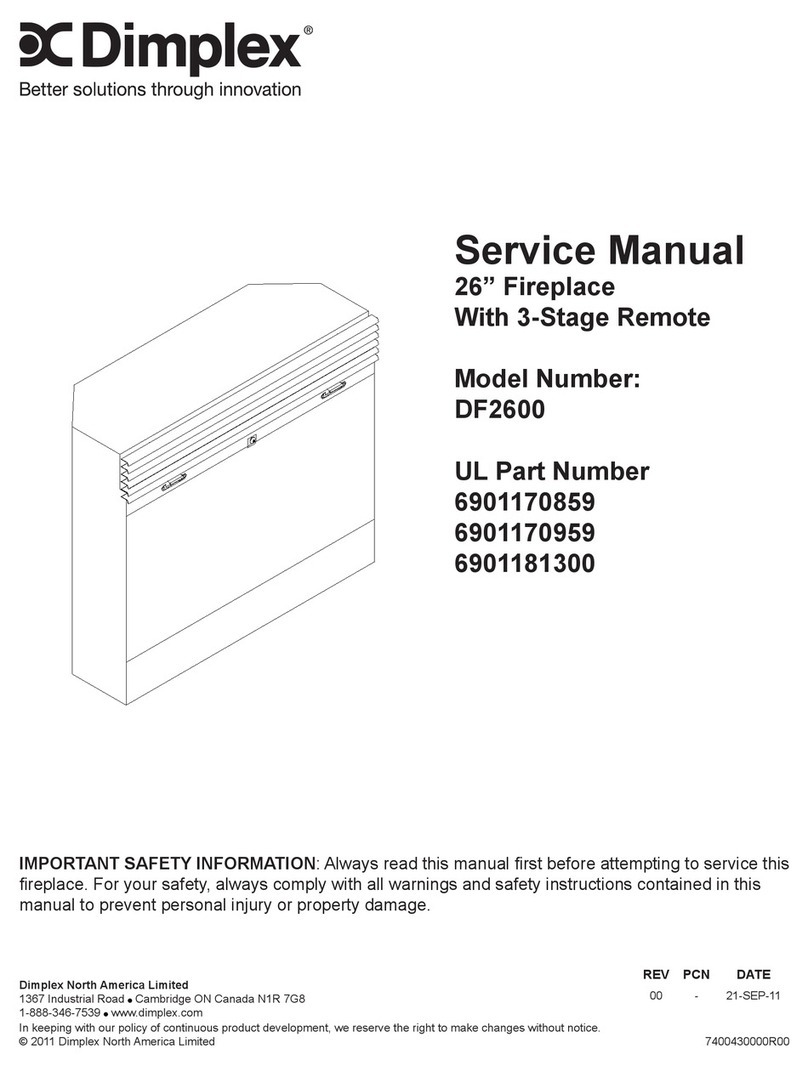
Venting System
A chimney connector and chimney make up the venting system. Inside, chimney temperatures may
exceed 2000 degrees F. To protect against a chimney fire, the connector and chimney must be
properly installed and maintained. When a connection is made through a combustible wall to the
chimney, a thimble must be used. A chimney support package must be used when a connection is
made through the ceiling to a prefabricated chimney. These accessories are of primary importance to
provide safe clearances to combustible wall and ceiling materials.
The unit may be connected to either a code approved masonry chimney with a flue liner or a
prefabricated listed high temperature (tested to 2100 degrees F) residential and building type heating
appliance chimney per UL 103 or ULC S629. The chimney size should not be less than or more than
three times greater than the cross-sectional area of the flue collar. Do not connect it to a chimney
serving another appliance.
Proper draft must be provided for your Energy King unit. Draft is the force that moves air from the
stove up through the chimney. The amount of draft in your chimney depends on the length of the
chimney, local geography, nearby obstructions, and other factors. Too much draft may cause
excessive temperatures in the stove and may damage the catalytic combustor. Inadequate draft may
cause backpuffing into the room and plugging of the chimney or catalyst.
Chimney Connector
Your chimney connector should be 6-inch diameter, minimum 24
MSG black or 25 MSG blued steel. Aluminum and galvanized steel
should not be used, since they cannot withstand the high temperatures
a wood fire produces. Never use chimney connector pipe as a chimney.
You must connect your stove to a chimney like those illustrated in this
manual. DO NOT PASS CHIMNEY CONNECTOR THROUGH
COMBUSTIBLE WALL OR CEILING.
Chimney connector sections must be attached to the stove and to each
other with the crimped end toward the stove. This allows creosote to run
into the stove and not onto the outside of the pipe. All joints, including
transition to chimney connector, should be secured with three sheet
metal screws. Otherwise, in the event of a creosote fire, the connector
may vibrate apart.
For proper operation, the chimney connector should be as short as
possible. Horizontal lengths of chimney connector should have an
upward slope from the stove of ¼ inch per foot.
Maintain 18 inches clearance between the chimney connector and the
wall and ceiling unless a wall protection system is installed.
When installing the stove into a masonry chimney, be sure to check for
signs of deterioration and blockage. Once the chimney is determined to
be safe, installation can proceed. The size of the flue should also be
checked. The chimney must have a fire clay liner or stainless steel lining
must be installed. The stainless steel lining should be single wall pipe, 6
inches in diameter, a minimum 24 gauge. If a flue lining is used, an air
space between the flue liner and the chimney wall of ½ inch must be
maintained.
11
A list of the more important minimum requirements for a properly
constructed chimney follows.




















